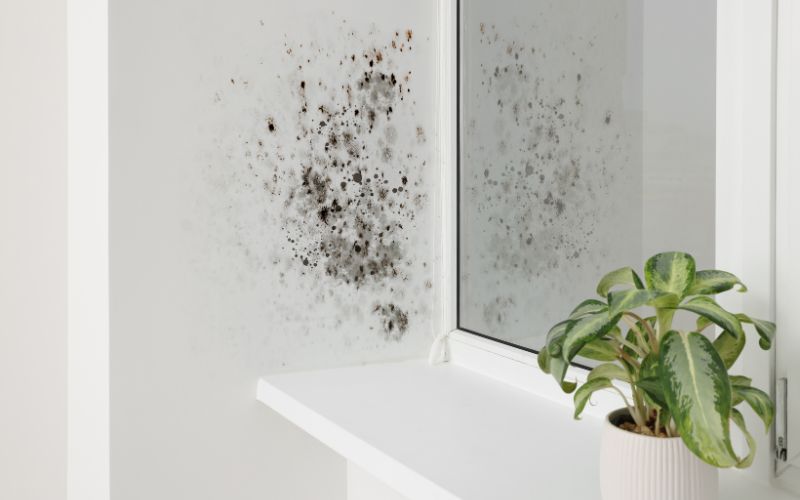Mold thrives in damp, dark environments, making basements, bathrooms, and poorly ventilated spaces prime locations for growth. But what about natural sunlight? Can those golden, warm rays affect mold growth? Direct sunlight for a minimum of 1-3 hours will deter mold from growing. However, understanding how natural light affects mold growth can help you better protect your home and yourself.
The Role of Sunlight in Mold Prevention

Mold needs light, organic material, and moisture to grow. Therefore, direct sunlight on a moldy area could help stop its growth.
Sunlight can dehumidify and break down the conditions under which mold can grow. Natural light dries wet surfaces and lowers the humidity in a room, which helps prevent mold growth. This is especially true in areas where sunlight shines directly, such as south-facing windows or rooms that receive ample sunlight throughout the day.
How Does Sunlight Affect Mold Growth?

The effects of sunlight on mold growth are varied. To better understand this, let’s examine how sunlight affects different things that influence mold growth.
1. Decrease in Moisture
Mold spores need moisture to grow, and sunlight helps reduce humidity by evaporating surface moisture. For example, sunny windows or sunlit rooms often have lower moisture levels, which can decrease mold growth. In areas like kitchens or bathrooms with high humidity, sunlight is beneficial for managing dampness. However, surfaces that retain moisture, such as those from broken pipes or high humidity, can still foster mold growth, even in the presence of sunlight.
2. Inhibition of Mold Spore Germination
UV light from the sun can potentially harm mold spores, preventing them from growing and multiplying successfully. Actually, prolonged exposure to direct sunlight can weaken the spore structure, making them less viable. That’s why areas or rooms with a lot of sunlight typically have fewer mold issues than their counterparts that are perpetually shaded. The UV radiation weakens the spores and destroys their reproductive rates.
3. Disruption of Mold Colonies
While sunlight may reduce new mold growth, it’s less effective on established colonies, which are made up of resilient fungal hyphae. You may have noticed that scrubbing mold in sunlight often doesn’t completely remove it, as the spores weaken but the colony remains anchored in materials like wood or drywall. Professional mold remediation may be necessary, as sunlight alone typically won’t eliminate severe infestations.
Factors That Affect the Effectiveness of Sunlight

While sunlight will prevent mold growth, its effectiveness is influenced by the following factors:
1. Sunlight Intensity and Duration
The quantity of sunlight a room gets can also affect mold growth. A room that receives very little sunlight in a day will have reduced UV radiation exposure, allowing mold to still develop, albeit more slowly. A room exposed to sunlight for most of the day will experience a decrease in mold growth, especially when the room is well-ventilated as well.
2. Time of Year
Sunlight also has a seasonal impact on mold growth. During the winter season, when the days are shorter, sunlight reaches indoor spaces less often. Moreover, the lower temperatures during the winter period tend to create higher humidity indoors, which can create favorable conditions for mold growth, even in well-lit spaces. During summer, the longer days and warmer temperatures can keep mold away by drying out rooms and lowering humidity levels.
3. Location of the Room
Spaces that receive direct sunlight, such as those facing south, will be more likely to benefit from mold prevention. A space that receives only partial sun exposure, such as one with large trees in front of it or on the north side of the structure, won’t experience the same advantages. Mold development in these areas is more likely to persist, especially if other contributing factors are present, such as high humidity or inadequate ventilation.
4. Ventilation
Poor ventilation, combined with high humidity, is sufficient to create ideal conditions for mold growth, even in rooms that receive some sunlight. Good airflow is necessary to avoid moisture accumulation and drying, so even well-lit rooms may still be plagued by mold if they have poor ventilation.
Conclusion
While sunlight can significantly slow mold growth by reducing moisture and damaging mold spores, it’s not a comprehensive solution for mold prevention. The key to mold control lies in managing moisture, maintaining proper ventilation, and addressing any existing mold colonies. A combination of sunlight, humidity control, and maintenance will provide the best defense against mold in your home.
Frequently Asked Questions
Can sunlight kill mold?
Although sunlight will kill mold spores and inhibit the development of new mold, it does not always kill a mature colony of mold. Exposure to direct sunlight helps lower humidity and inhibit the germination of spores; however, for large areas of mold growth, professional removal is usually required.
How can I prevent mold growth in darkly lit rooms?
Provide adequate ventilation by using exhaust fans, opening windows whenever feasible, and purchasing a dehumidifier to maintain low humidity levels. Cleaning regularly and responding immediately to leaks are also crucial.
Is sunlight beneficial for mold in basements?
Basements typically do not receive sunlight, making them ideal environments for mold growth. You can reduce mold in these areas by using a dehumidifier, ensuring proper drainage, and maintaining adequate ventilation. While natural light is limited, it still has its uses if you have windows or a crawlspace that allows light to enter.
How long does sunlight take to prevent mold from growing?
It varies with the strength and duration of the sun and the moisture content of the room. Exposure to direct sunlight for 1-3 hours can significantly reduce mold growth, but complete prevention may require several days or weeks, depending on other factors such as ventilation and humidity.

